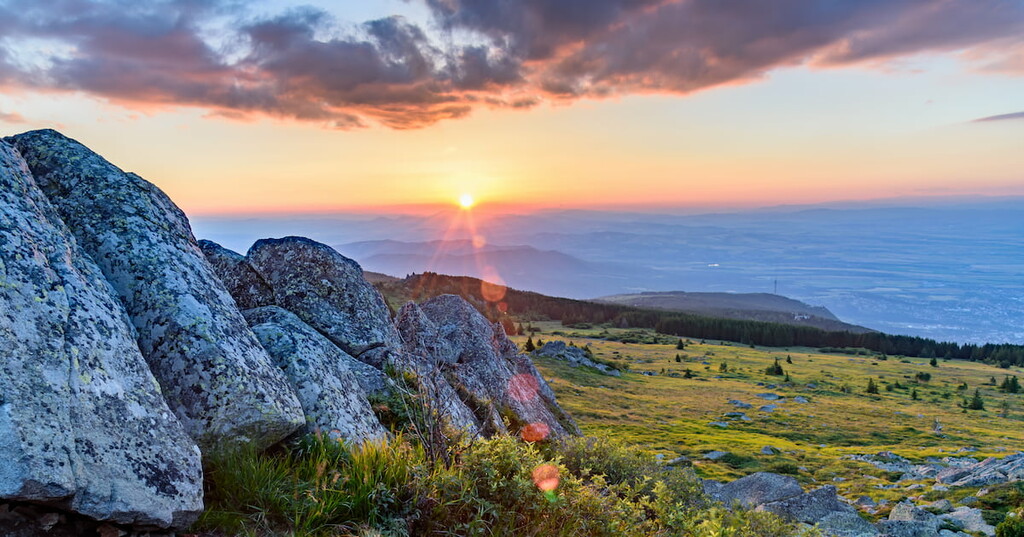Get PeakVisor App
Sign In
Search by GPS coordinates
- Latitude
- ° ' ''
- Longitude
- ° ' ''
- Units of Length

Yes
Cancel
Share ×

Scan the QR code and open PeakVisor on your phone
❤ Wishlist ×
Choose
Delete
Vitosha Nature Park is the oldest nature park on the Balkan Peninsula and is an integral part of Sofia, Bulgaria. The mountain's stunning profile can be seen from almost all locations in the city, making it impossible for people not to notice it. There are 111 named mountains in Vitosha Nature Park. The highest and most prominent mountain is Cherni vrah (2,290 m/ 7,513 ft).
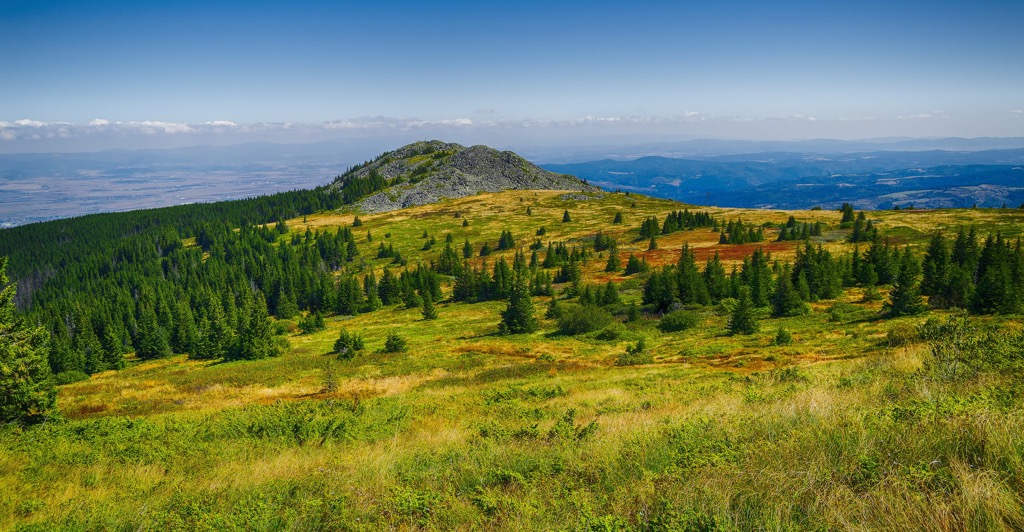
The beautiful capital of Bulgaria has many high-quality features. It's easy to fall in love with the architecture and have a good time at nightclubs, but if that isn’t your deal, Vitosha Nature Park could be exactly what you need. Most visitors should be able to find the park in minutes from the city center.
It's been a long history for the mountain. First, it started as a 6,600 ha (16,308 ar) protected area in 1934. A local conservation society went to work after it was declared a park to make it 27,079 ha (66,958 ar) big. This land now encompasses almost the whole mountain, offering beautiful biodiversity and two breathtaking protected areas.
The highest peak at 2,290 m (7,513 ft) is called Cherni vrah (lit. Black Peak) or in Bulgarian черни връх, and it’s one of 12 peaks in the area over 2,000 m (6,561 ft) tall. The mountain is divided into five parts: Sredna Gora, Greben, Viskyar, Plana, and Lyulin.
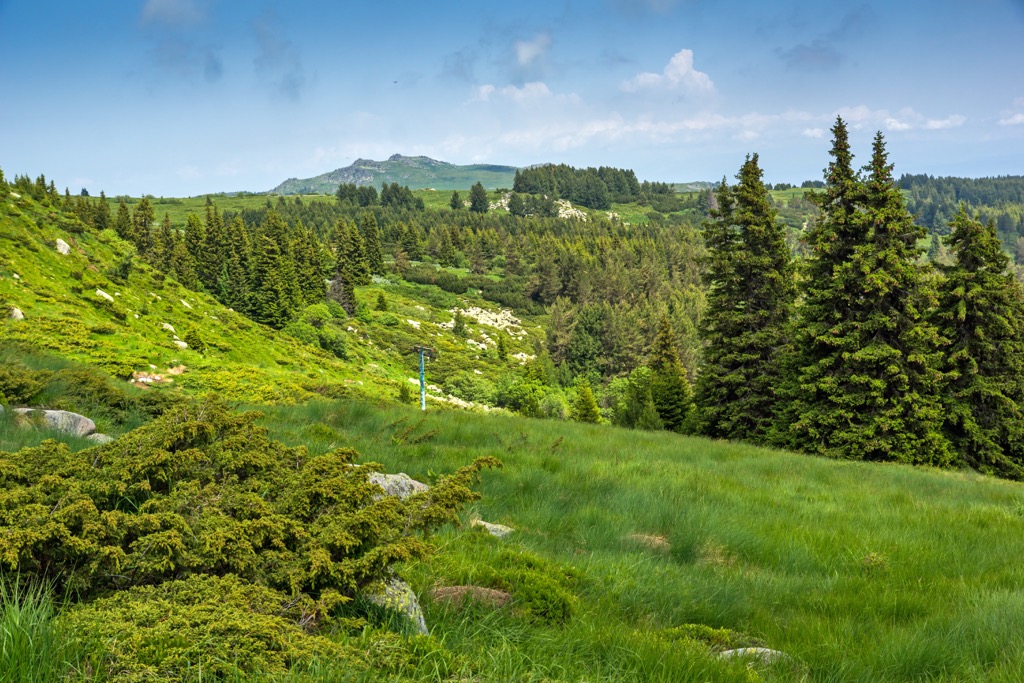
Therefore, Vitosha Nature Park is a nature reserve in Bulgaria that covers most of Vitosha mountain. Private organizations and their volunteers made the first trails through the mountain in the nineteenth century.
The mountain's connection with Sofia city is still there today since locals can enjoy the mountain during their breaks from work. Scientist Hochstetter from Austria, who visited Bulgaria in the nineteenth century, said: “Sofia and Vitosha are inseparable like Naples and Vesuvius”.
Vitosha Naturе Park is the most popular park in the country. Since it is close to Sofia, it has been turned into a site of education on how to take care of nature responsibly. It is a must-see if you are visiting Sofia.
One of the most popular destinations in Vitosha nature park is Boyana Waterfall. Here, you can enjoy a long walk on a scenic path, picnic, or just have some pictures taken by the breathtaking views.
Another geographic feature of the biosphere here is the Duhlata Cave. it is situated in the locality of the village of Bosnek. It has a length of over 18 km (11 mi).
The Bistrishko Branishte Forest Reserve and the Torfeno Branishte or Turf Forest Reserve each have their own protection statuses. The Bistrishko Branishte Reserve is on the north-eastern slope of Mount Vitosha. It's one of the reserves that protect the alpine and high mountain spruce forests, sub-alpine grass cohabitations, rock formations, and stone rivers in Bulgaria.
They established the local Arboretum in 1952, with an average altitude of 1,175 m (3,854 ft). It presents 350 different species of Bulgarian and foreign trees and bushes. The constructed walking alleys, fountains, tables, deck chairs, and the two lakes create perfect conditions for relaxation.
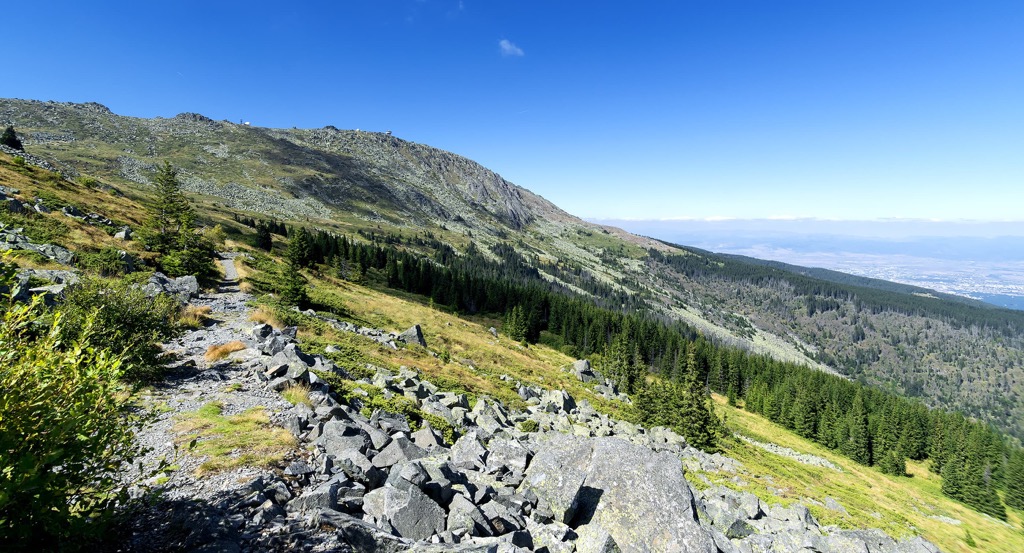
There is a lot to do in the park, and one can also visit the Nature Conservation Center in Dragalevtsi, the museum of dragonfly in Belite Brezi, and the Museum of Bear in Dendrarium Locality, or the House of Owlets.
Vitosha Park is an international tourist destination along with a popular hiking destination. People can hike different trails during the summer. In the Vitosha range in Bulgaria, you can go skiing and snowboarding in the winter too. Here, everyone can enjoy more than 40 lodges and small hotels, which makes the mountain all the more attractive.
Vitosha is a mountain range in central Bulgaria with various unique features. Its foothills are covered with resort hotels to the south of Sofia, including the Knyazhevo quarter, which also houses mineral springs.
The mountain was slowly shaped over time by the occurrence of lateral folding and elevation. It emerged as a result of volcanic activity, which is why it appears to be a dome from a distance. But, it is actually composed of denudational plateaus rising in tiers. These tiers are separated by central craters made of water.
A result of the folding of the earth's layers through the Mesozoic is what made Vitosha. The laccolithic domed form of Vitosha is a typical example of the Mesozoic fold. Between layers of sedimentary rock, geological activity inserted magma sheets and that is why we have the type of terrain here.
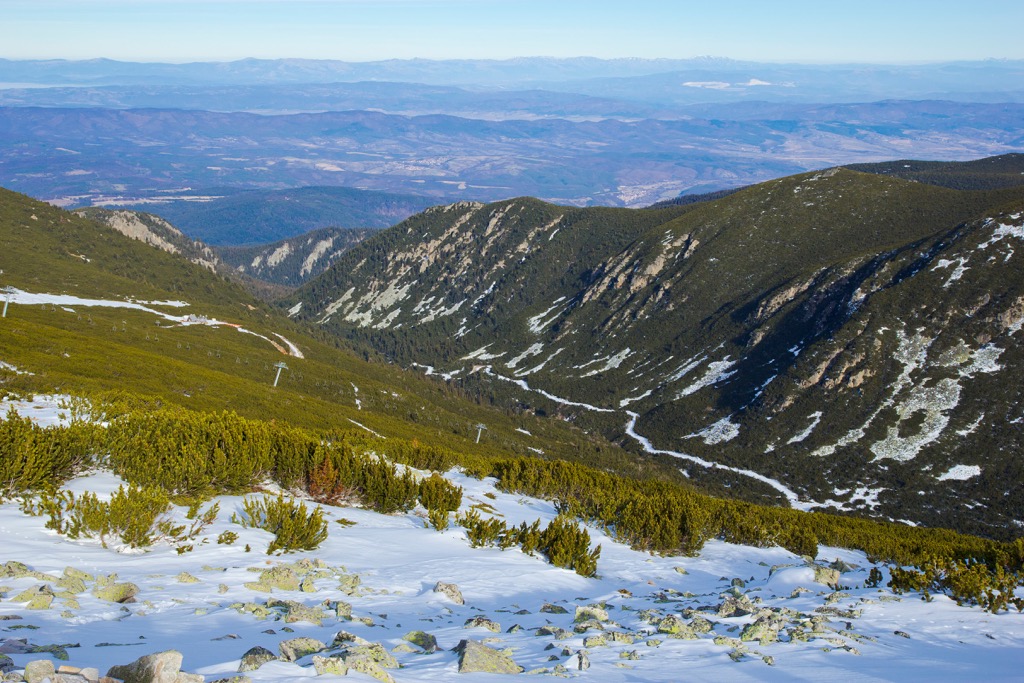
In Vitosha Park, one can enjoy stone rivers (also known as moraines) that run across the park. You can find a particularly beautiful stone river in the area near "The Golden Bridges" or Zlatni Mostovi (1,390 m/ 4,560 ft). Vitosha Mountain is famous for its many features, including the natural stone rivers. These formations track the movements of former glaciers that broke off the cliffs of this mountain into smaller boulders.
The rocks range in size from a football to a compact car. These moraines are particularly famous, as they lie at Zlatni Mostove or Golden Bridges. The boulders on which yellow lichens grow, give them their name.
At Vitosha, it's often 10 °C lower than in the city. This makes it hard to leave when hiking here in the summer. The Vitosha mountain has 10 peaks above 2,000 m (6,561 ft). The highest one is Cherni vrah, whose height is 2,290 m (7,513 ft). It lies near the center of the mountain, and the Struma River flows below it. The highest peaks here include:
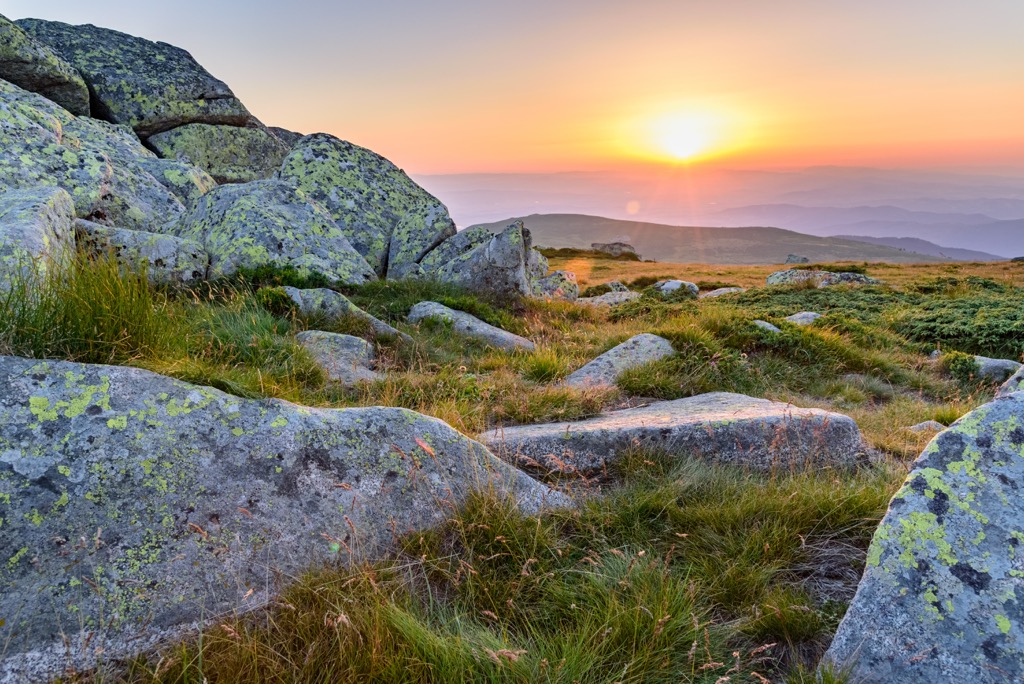
One can see a total of 61 habitats in Vitosha Nature Park. These include natural spruce forests, peat areas, and caves which are habitat types of high conservation value.
Vitosha is home to a plethora of plant species common throughout the Balkan Mountains. Notable flora on or near the park includes all vegetation zones characteristic of the Bulgarian mountains, except for alpine. They are also a habitat for Balkan endemics such as ixias (a variety of tulips) that bloom in beautiful yellow blossoms during the summer months.
The vegetation in Vitosha Park is also varied and rich in species. The park has been noted to have over 500 species of freshwater algae, 805 mushroom species, more than 360 lichens and moss species, and 1,489 higher plant types.
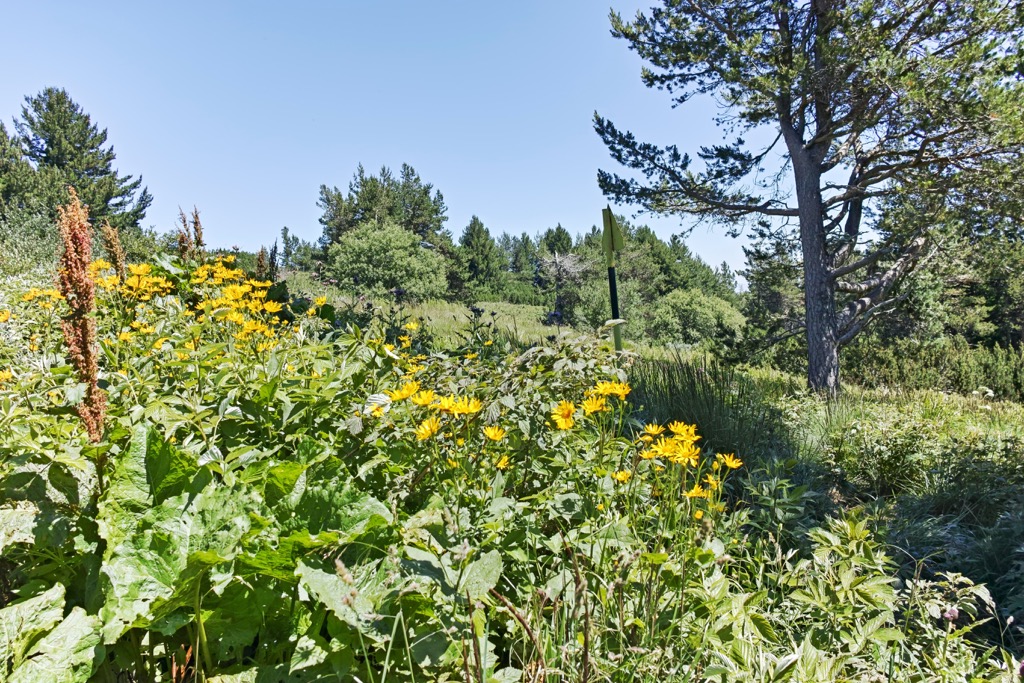
Wildlife is abundant in the mountains around Sofia, Bulgaria. Since the park is part of Vitosha Mountain, it houses over 234 types of bird species. Almost all of these birds live in the spruce forests and are one of the most common inhabitants.
Vitosha massif has a diverse ecology, native orchids, and bird diversity. There are 31 endemic Balkan species, and 52 endangered species, biodiversity of the Balkans is both richly diverse but still under severe threat in practice.
13 bat species have been discovered in this region thanks to speleological expeditions. The Biological Diversity Act protects all these bats. Visitors to the longest cave in Bulgaria, Duhlata, in Bosnek village, can see them and should explore the passages with 6 levels and 18 km long (11 mi).
Larger mountain mammals include species such as deer, wild boar, bears, and wolves. The typical inhabitants of the spruce forests are the nutcracker, coal tit, common crossbill, etc.
Although big game hunting is still a practice, the bear population is currently at 9 individuals. There are many conservation efforts taking place to help these animals repopulate Vitosha. Many species of wild animals are gone extinct, and the lynx and the wild goat, in this case, were no exception.
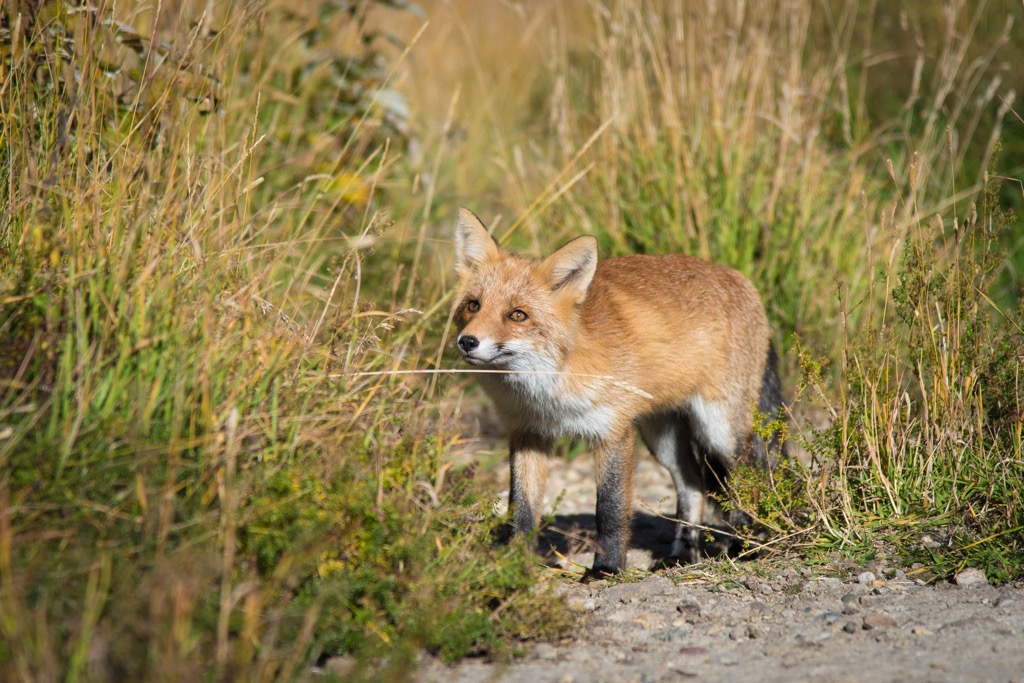
Since 2002, the park has successfully put in place a project that would bring back the Balkan wild goat, which locals believed to have disappeared from mountain peaks over 100 years ago. The park also protects the local wilderness reserves Bistrishko Branishte and Torfeno Branishte.
Every year since 1977, UNESCO has designated the Bistrishko-Branishte Reserve a biosphere reserve. One can find Bulgaria's largest boggy areas in the Torfeno Branishte Reserve. It is also home to cobalt-blue water and hydrophilic vegetation.
The first written trace of the Vitosha mountain comes from Tuqidid, back in the fifth century. The ancient names of the mountain were Scopius, Scombros, and Scomios, before getting its current name. The name Vitosha is probably of Trajanic origin, and it means lit. mountain with two peaks.
Vitoša has been a large population base of Sofia for thousands of years. The city is connected with it since ancient times and is still talked about in connection with its neighboring mountain Vitosha. Its economy has always depended on it for 4,000 years.
Vitosha nature park has become a popular destination not just for its natural beauty but also for the numerous historical and cultural landmarks. Only two out of the 40 monasteries from the Middle Ages have survived. The Kladniski monastery complex is one of the oldest preserved monasteries in Bulgaria from the Middle Ages. It's also one of the most famous places in Sofia, designated a cultural monument.
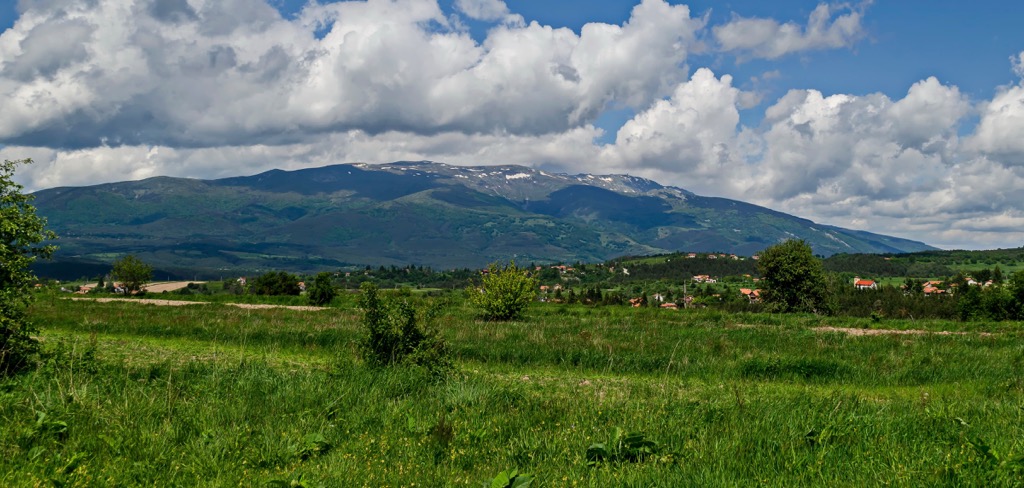
One of the most popular is the Dragalevsky Monastery of Saint Mary of Vitosha, where Western-style monks first settled in order to practice their faith. Another less impressive but notable Orthodox Kladnishki Monastery of Saint Nikolas Miliyski, the Miracle Maker, was established in the nineteenth century.
Another monastery from the Dragalevsky Monastery is "Uspenie Bogorodichno" from the fourteenth century, a cultural center for Sofia, which has beautiful frescoes. In 1995 the monastery and the churches were declared national monuments of cultural significance.
One of the main attractions in Sofia, Bulgaria is an old church called Boyana Monastery that was built during medieval times and included in the UNESCO List of Global Cultural Inheritance. Many people know the Boyana Church quite well, as it is one of Bulgaria's few perfectly preserved medieval monuments. It is an exceptional example of medieval Bulgarian architecture and iconography.
Climbing Vitosha was the goal of numerous tourist or hiking societies in Bulgaria. The first tourist movement in Bulgaria set up the first trail for climbing the Cherni vrah (2,290 m/ 7,513 ft) Peak on 27 August 1895. Today, the park has trails with over 300 km (186 mi) in total length.
The first nature park in Bulgaria and Balkan Peninsula and among the first ones in Europe as well is Vitosha Nature Park. It was declared one in 1934, with a small total area of around 6,600 ha (16,308 ha). Currently, the park covers over 90% of Mount Vitosha's area.
Before 1934, the habitats in this mountainous area were still being extensively exploited. This led to a decline in their biodiversity, which resulted in unfavorable human impacts and many ecological issues.
In 1935, authorities designated the zone of Bistrishko and Torfeno Branishte Reserves to protect the area against further exploitation. Preserving forests in their natural state is a crucial task for Bulgarian authorities. Protecting the coniferous forests, alpine grass vegetation, and significant peat complex is their goal, all of this provided by government-run organizations.
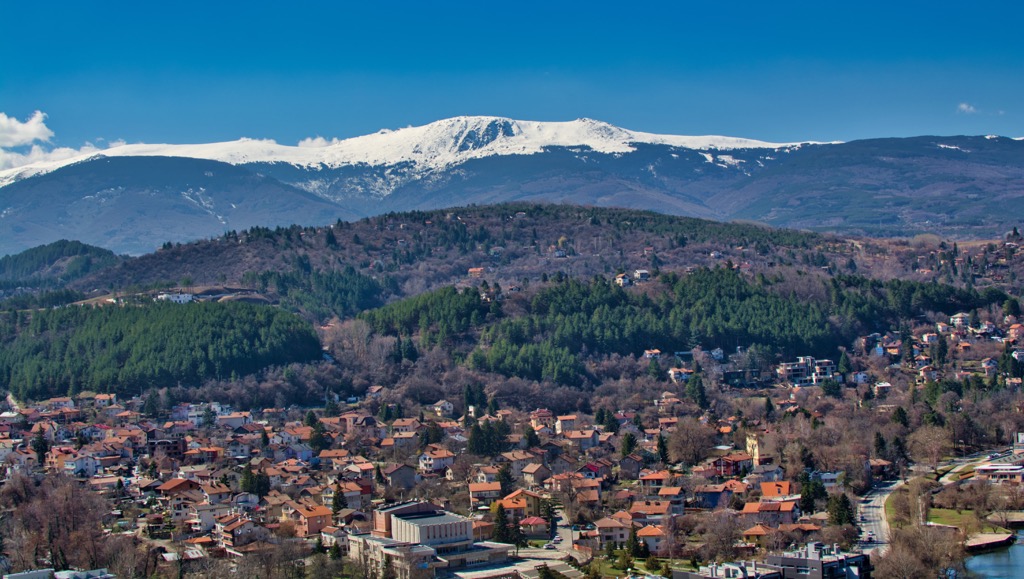
Wondering where to hike in Vitosh mountain? Here are a few ideas:
The mountain is known for its various activities, including trekking and winter skiing. There are six runs of 13.5 km (8 mi) total length, as well as mountainous rock climbing opportunities and even paragliding. There are a lot of mountain trails in the northern part of Vitosha.
Focusing on the most popular tourist routes and major landmarks, this hike will take you to Knyazhevo, presenting the much-loved Aleko Hut. From here, you can reach and enjoy the views of Cherni vrah (2,290 m/ 7,513 ft) and Zlatnite Mostove. In fact, you can reach the mountain's peak from any direction since the trails are all well marked.
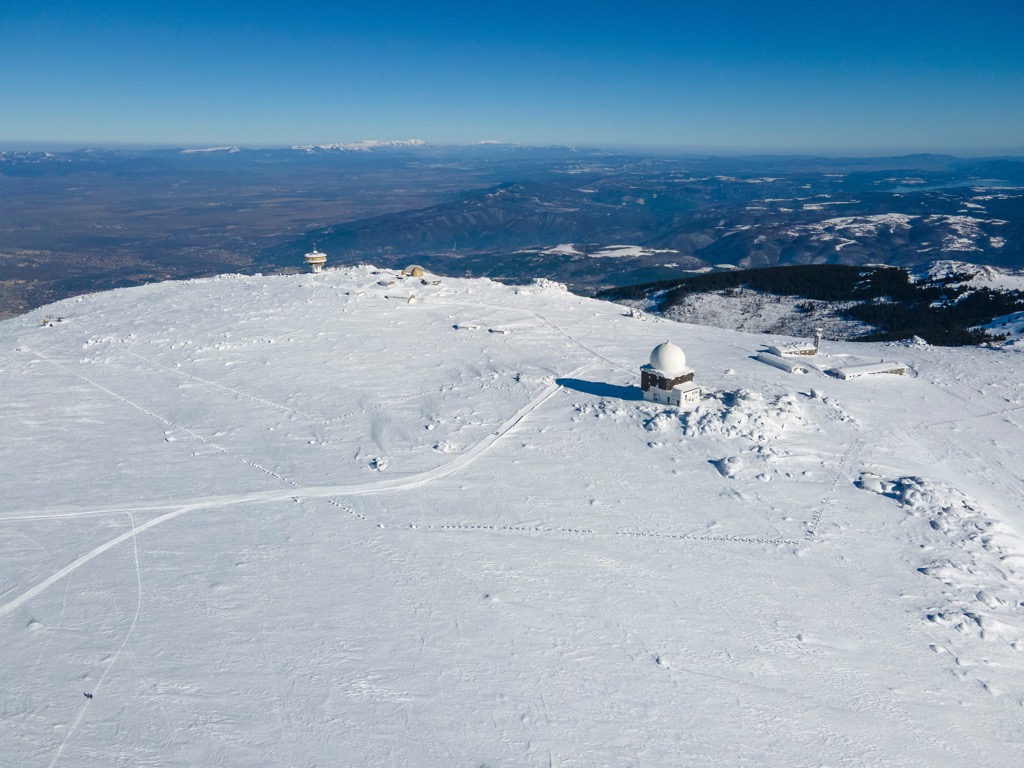
This is an excellent 5 km (3 mi) afternoon hike. There's a gorgeous waterfall at the end that will make you feel like your trek has been well worth it. There are some spots with a little bit of mud and water that may get you dirty, but they can all be done with closed shoes.
Head on out to hike the 5 km (3 mi) loop trail. The trailhead is in the suburbs near Sofia, Bulgaria. This is usually considered a moderate route, and you can still enjoy some privacy at quieter times of the day.
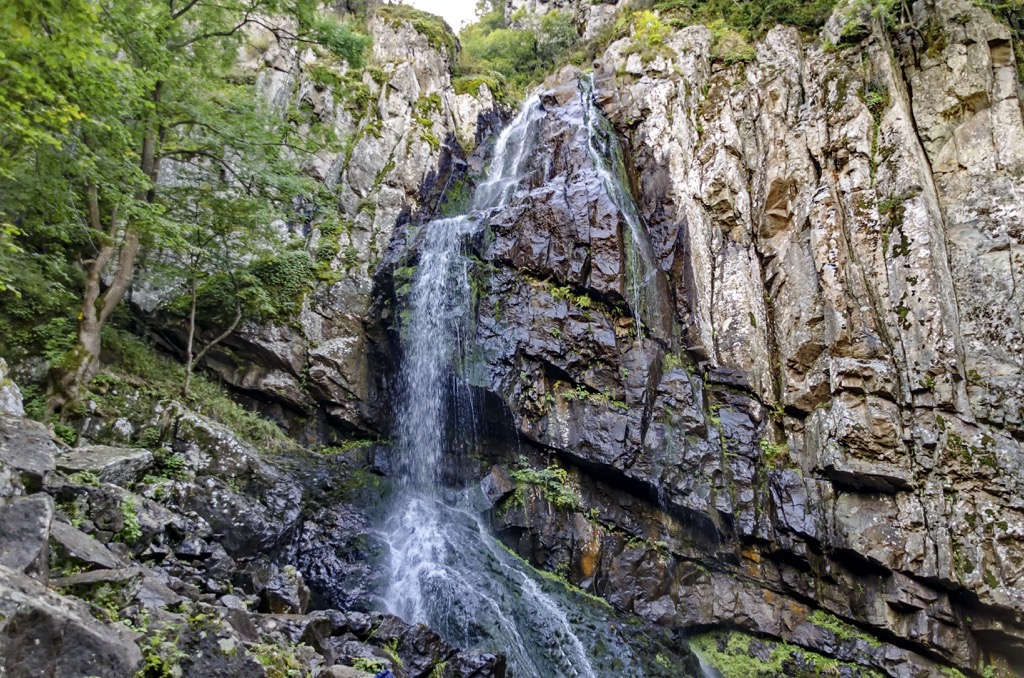
Another great idea for beginner hikers is visiting one of the huts and grabbing lunch or dinner there. You head out from Zlatnie Mostve, reach the Edelweiss Hut, Zviezdica Hut, and then the Kumata hut.
This is a circular route, which will then take you back to Zlatnie Mostove. The hike takes 5 km (3 mi) and is a light to intermediate hike. This way, you will see Vitosha's different huts and dining options.
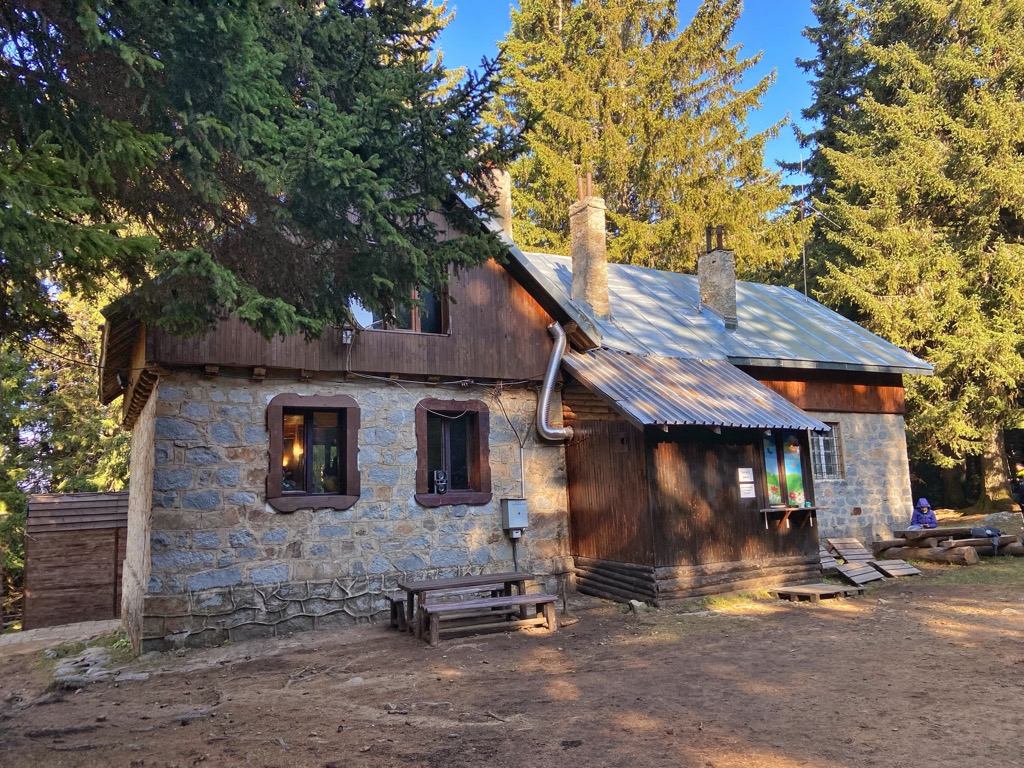
Don’t forget to visit these cities as well:
Sofia is the capital and largest city in Bulgaria, with a population of more than 1.3 million. It is an important economic, cultural, educational, and transportation hub in southeastern Europe.
Sofia has a rich history dating back to the sixth century BC, when it was founded as a Thracian settlement known as Serdica. Slavs took over the city in the seventh century AD and named it Sredets (meaning lit."middle").
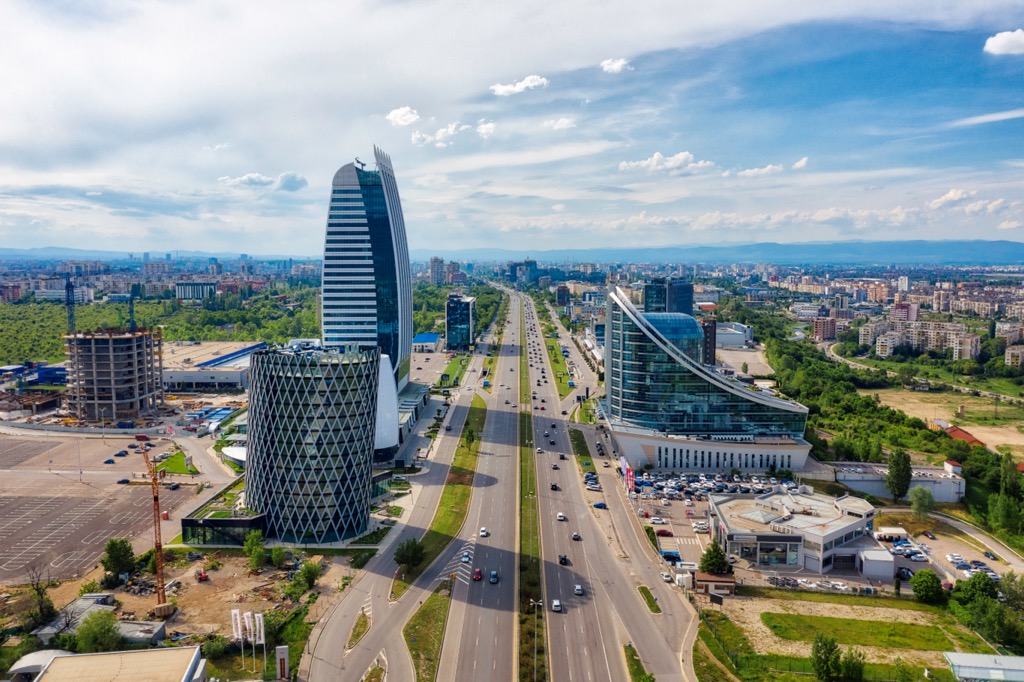
The city became part of the Ottoman Empire in 1396, and its importance grew with the development of trade and commerce. With its strategic position in the Balkans, Sofia continued to develop throughout most of its history. It then became part of Bulgaria's capital city Sofia.
Pernik is a city in Bulgaria. It lies on the banks of the Maritsa River, which flows into the Aegean Sea. Pernik is not a touristy city, so finding accommodation will be easy and budget friendly. It lies near Vitosha, and you can reach it via road and rail.
Pernik has a rich cultural heritage with an impressive history dating back to ancient times. Its name comes from Pernikas, an ancient Thracian king, buried in the city’s territory.
Kyustendil is a city in Bulgaria. It is the administrative center of Kyustendil Province. The city has a population of about 55,000 people, and it lies at the foot of the Balkan Mountains, on the banks of the Struma River.
Kyustendil was founded in 1878 by Bulgarians from Macedonia and Thrace who were forced to leave their homes during an Ottoman invasion. It is a medium-sized city in Bulgaria, which you can reach via air and rail. The most popular accommodation here is hotels and hostels.
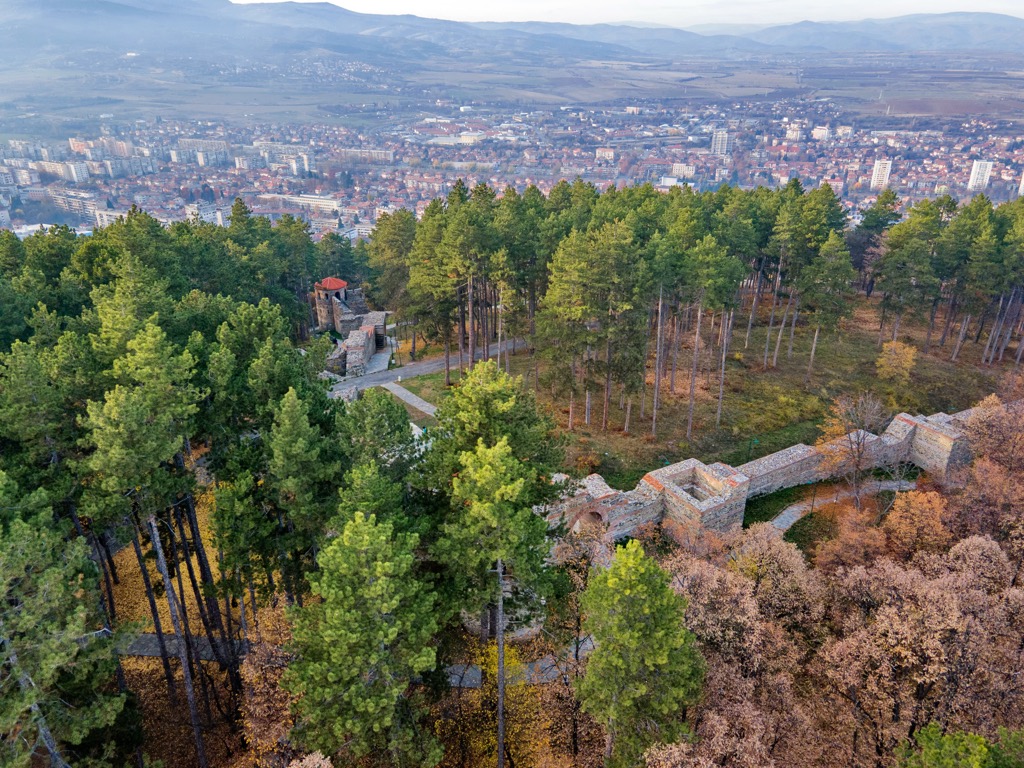
Explore Vitosha Nature Park with the PeakVisor 3D Map and identify its summits.
